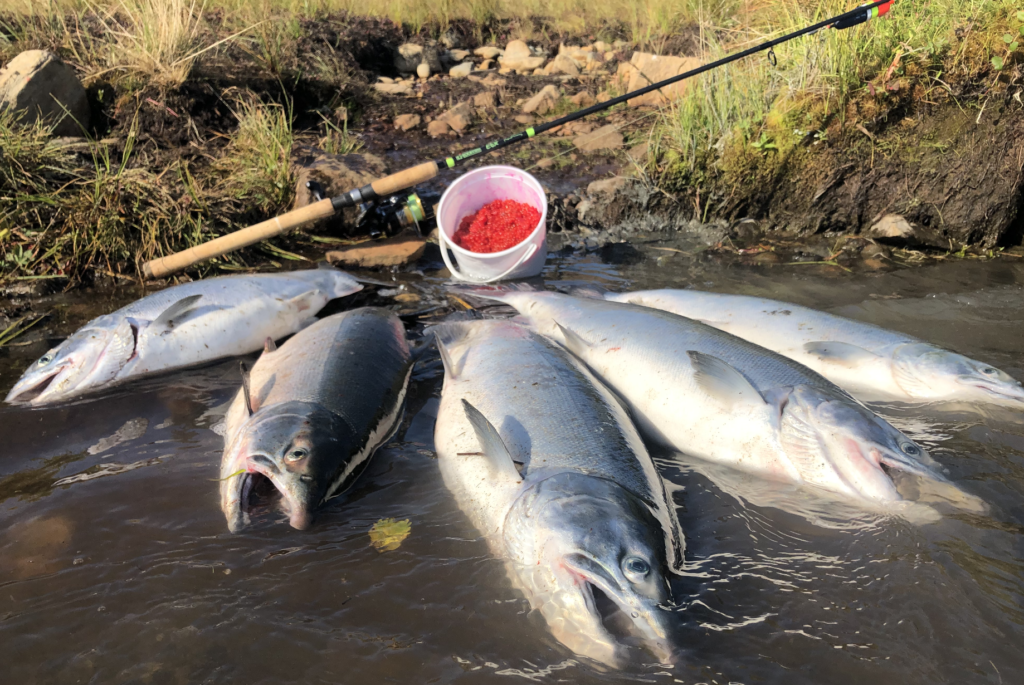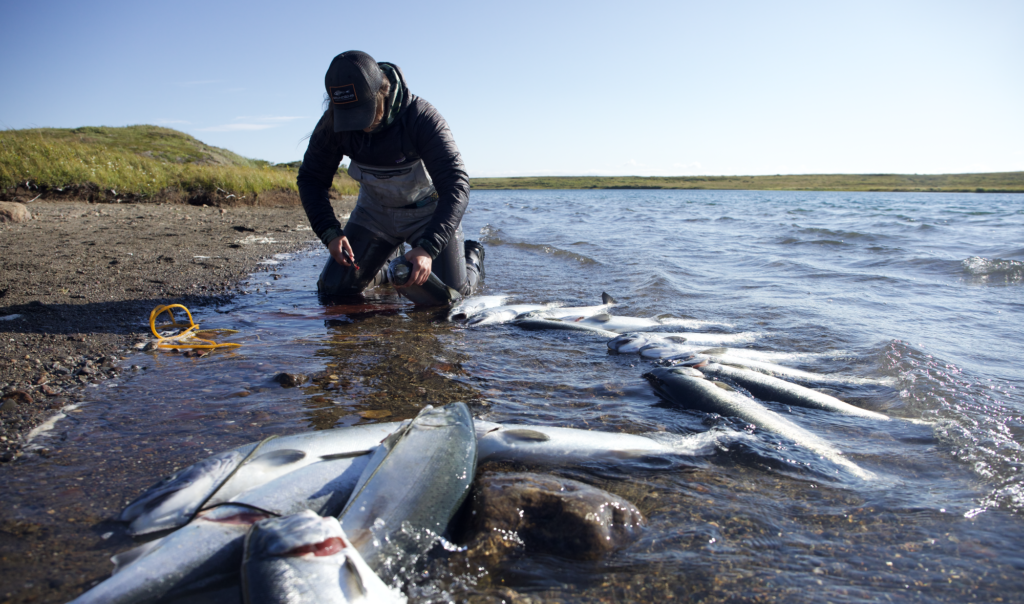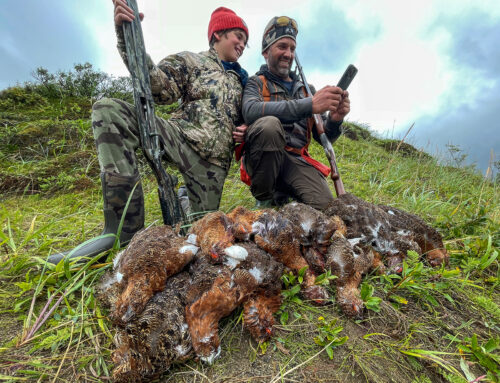 Even on Alaska’s Egegik River the early morning coho bite is best. On slow days this is more evident, but it’s also the case on days when the salmon fishing is red-hot.
Even on Alaska’s Egegik River the early morning coho bite is best. On slow days this is more evident, but it’s also the case on days when the salmon fishing is red-hot.
In any given salmon hole on the Egegik River, the most aggressive coho bite first, and they’ll often rise to the surface to attack a presentation. Sometimes the most aggressive biting coho salmon rise quickly from the river bottom. The Egegik River flows crystal clear and it’s not very deep, meaning coho have direct visibility to your bait at all times. It’s nothing for salmon to swim from six feet of water or even deeper to attack a bait near the surface of the river.
At Becharof Lodge on the Egegik River, we fish a lot of cured salmon eggs. Salmon have a sense of smell measure in parts per billion and capitalizing on this trait through a well-cured egg is our goal. Because the Egegik River is so shallow, and coho are close to shore early in the morning, we often drift fish cured eggs without using a sinker. The weight of the bait is enough to cast, and because there’s no sinker being used, the egg presentation is neutral-buoyant as if drifts downstream.
The vision of salmonids is conical shaped, a phenomenon known as Snell’s Window. Think of putting the point of a snow cone cup right between a salmon’s eyes. The farther above the salmon’s head you get, the greater it’s field of view becomes. By fishing shallow water with well cured coho eggs, we’re targeting both the salmon’s sense of smell and sight.
above the salmon’s head you get, the greater it’s field of view becomes. By fishing shallow water with well cured coho eggs, we’re targeting both the salmon’s sense of smell and sight.
We also fish shallow water egg presentations with a sliding bobber setup. We spool our Shimano spinning reels with 30 pound PowerPro. Thirty pound braid isn’t necessary for the strength, but it offers a bit more diameter which means it floats better than a lighter weight, thinner diameter line. A thicker line helps control the bobber as it floats downstream, making mends more efficient, especially in fast moving water like we find in some places on the Egegik River.
With the float pegged to the swivel you can fish in 6-inches of water by using only a 6-inch leader. Coho will rise to the surface, often biting your float, so there’s no such thing as fishing too shallow in the gin clear Egegik River. Aggressive coho are not surface shy early in the morning, and those are the fish you want to first target when entering a salmon hole.
Once the surface bite stops, or if it never started, slide the bobber a foot or so up the line. This is where an in-line sliding bobber is efficient because it’s your depth regulator. Coho are not leader shy so you can keep fishing the short leader.
 As the bite subsides, keep sliding the bobber stop up the mainline a foot or so at a time so you can target salmon that are holding deeper in the water column. Once you get close to the bottom, switch to drift fishing.
As the bite subsides, keep sliding the bobber stop up the mainline a foot or so at a time so you can target salmon that are holding deeper in the water column. Once you get close to the bottom, switch to drift fishing.
We like using just enough sinker to where a drifted presentation touches the bottom every few feet. Once you feel the sinker hit the river bottom, lift it so it rides higher in the water and disperses more scent throughout the water columns. While float fishing initially targets a salmon’s sight, the deeper eggs are fished in the river, the more you’re also triggering a salmon’s sense of smell by establishing a scent line.
Color also plays a big part in capturing the attention of coho, especially in the Egegik’s clear water on sunny days. Bright red and orange are tops when it comes to catching coho. For the past three seasons our go-to egg cures have been Pro-Cure’s Wizard Cure in Double Neon Red and their Bait Cure in Flame Orange.
Coho can sometimes be finicky, even on remote rivers in Alaska like the Egegik, and switching egg colors or even using different scents can be just the thing to turn on a bite.
At sea coho are fierce predators and that’s the instinct you’re targeting when fishing for them in rivers. You want them to see and smell a presentation, then quickly react to it, and that’s where well-cured eggs come in.







